Last Updated on May 16, 2022 by Grow with Bovees
When planning a gardening project, most people will instantly think about what plants they want to include without considering a landscape design.
But, when we look at natural landscapes, there’s so much more to consider, including stone and rock. Landscaping rocks such as brick, slate, flagstone or crushed rock, can be useful for a lot of things in your garden, including to raise plant beds and for building retaining walls.
They can also add texture and be quite a decorative focal point in your yard.
In this article, we’ll explore different types of landscaping rocks. We’ll also discuss how to choose suitable stones for your landscape design.
How to Choose the Right Landscape Rocks
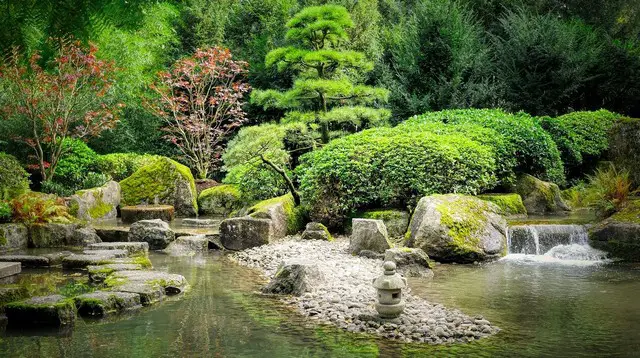
You can use landscaping rocks for a wide variety of things in your garden, it all comes down to personal taste and preference. But before you choose a landscaping rock and start design planning, you might want to consider the cost.
Decorative rock and prices of landscaping rocks can vary depending on the type, size and amount of material you wish to buy.
Stones and landscaping rocks that are local, regional, or indigenous to your area are usually a more affordable option. Looking at these types of landscaping stones can be a good starting point.
Landscaping rocks such as beach pebbles, river rocks, brick, flagstone and other decorative gravel are most commonly sold by the sack or per cubic yard.
The landscaping rocks you choose for your landscaping project will also depend on several factors relating to your garden’s appearance and the functions you want them to serve.
Appearance
Let us start by specifying the appearance of the landscaping rocks and do they fit to your garden and landscape design.
Shape and Texture
Are you after soft, smooth edges or do you want a jagged, crisp look? While the shape and texture of landscaping rocks affect your garden’s appearance, it can also change the acoustics of the landscape.
Color
Do you like cool blues and grays, or are you after warm earthy tones like reds and browns?
Consider the color of your home and surrounding landscape. Do you want it to match or contrast?
The color of the landscaping rocks that you end up choosing will set the mood for your outdoor living space.
Theme
Some landscaping rocks are well suited to specific themes. For example, lava rocks look great in desert-style landscapes, whereas river rocks are fantastic for zen gardens.
Choosing a theme for your landscape design before you start looking for the perfect stone combinations for your rock garden will help you decide which landscaping rocks you want to incorporate.
Size
Think about the size of your outdoor space. If your yard is small, you probably don’t want to go out and buy boulders but rather more petite landscaping materials.
Functions
Up next, we look at the functions of different decorative rock types.
Plant Habitats
Some larger rocks can be positioned to shelter plants from sunlight or help reflect light onto sun-loving plants.
Prevent Erosion
Some landscaping rocks can slow down soil erosion.
Using smaller stones as mulch will help protect vulnerable areas from the natural elements, mowing, and foot traffic.
Covering Unsightly Areas
Landscaping rock or stone can be used for landscaping around trees, or other features that would otherwise be difficult to hide.
Drainage
If the soil slopes away from the foundations of your home, you could use crushed rocks to create a barrier against rainwater.
Some stones, including gravel and crushed rock, help drain water away from your home and keep the foundations dry.
Rocks also absorb heat from sunlight and radiate it at night. This speeds up the melting process of ice and snow, and the stones can quickly drain it away from your home.
Inhibit Weed Growth
You can use rocks as inorganic ground cover to suppress weeds.
Hardiness
If you want to landscape a driveway, it’s essential to choose suitable rocks. Some stones, such as pavers, are more suited to driveways as they’re flat and can withstand wear.
What Are the Different Types of Landscaping Rocks and Stones?
There are a lot of different types of rocks and pebbles found on the market. Continue on for some examples of the best landscaping rocks to use and how you can use them.
Flagstone
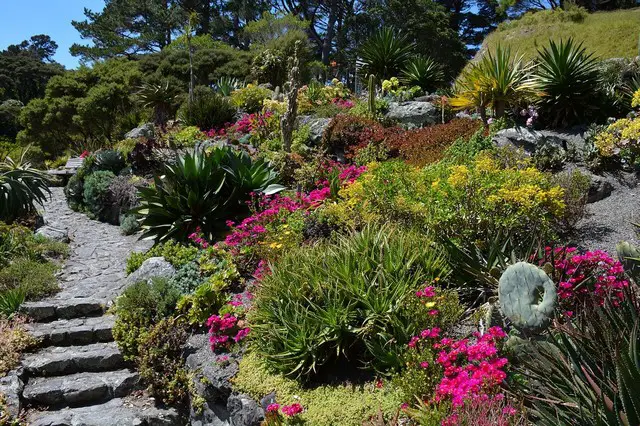
Flagstones are large flat rocks made from slate, travertine, limestone, sandstone, or bluestone. Each type of stone has a different texture and color. The flagstone is often cut into a rough square, rectangular, or irregular pieces.
These can be difficult to install because of the stone’s natural texture and rough cuts. You can use flagstone for patios, pathways, driveways, or you could fit it to the top of a garden wall or build retaining walls.
This creates a natural-looking flat surface, ideal for seating areas or placing flower pots.
River Rocks or Rainbow Rocks
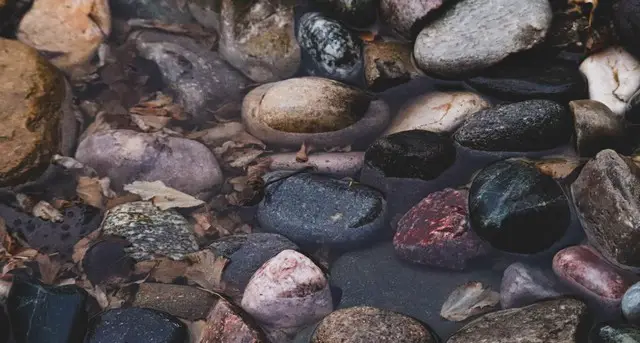
River rocks or rainbow rocks are a diverse group of stones that have been eroded by water, sediment, and silt.
The river current carries sediment and silt, and they collide with the soon-to-be river rocks. The speed of the current determines how quickly a river rock is formed.
These beautiful rocks come in a variety of colors, shapes, and sizes. River rock is often used as part of a water feature for its natural beauty, and they also look incredible as ground cover.
Decomposed Granite
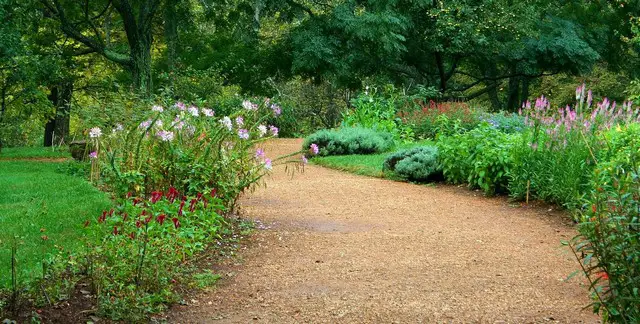
Decomposed granite is a versatile landscaping rock that comes in two forms; crushed and fine. The crushed granite is similar to a gravel texture, whereas fine is sand-like.
Both types of granite are often used on pathways, driveways, patios, and as mulch. It’s permeable and provides excellent drainage.
Decomposed granite can be spread around flower beds and trees. It will continue to break down after it is laid and provides nutrients to the soil and plants.
It lasts longer than organic mulches and won’t attract pests.
Pea Gravel
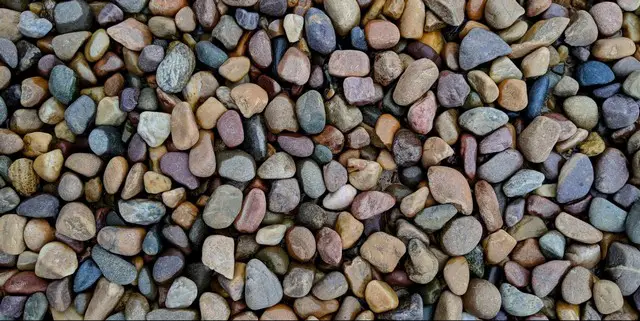
Like river rocks, pea gravel is formed due to natural weathering, and it is usually found near water. The smooth pea-sized stones come in a range of vibrant pinks and blues that intermingle with earthy browns and grays.
The aesthetics of pea gravel make it suitable for many garden areas, including driveways, walkways and flower beds. Pea gravel is also commonly used to fill spaces between much larger stepping stones or pavers.
Although pea gravel can inhibit weed growth, you may still find some that work their way through the small rocks. It is always best to use a weed killer for gravel, or landscaping fabric below the natural stone as a barrier to help suppress weeds.
Pea gravel makes fantastic mulch because it retains moisture. This natural stone can also work well as a border around your house. It will protect against rodents as they can’t dig through it, and it makes an ideal drainage system to steer water away from your home.
Limestone Gravel
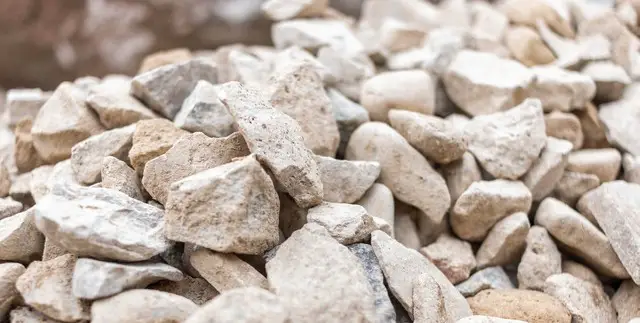
Limestone gravel is durable and can make stunning paths or driveways due to its bright white color. You can also use this natural stone on garden beds.
However, limestone reduces the acidity of the soil by increasing the pH. So it’s best to avoid this material if your garden already has a high pH as it may harm your lawn.
Limestone also comes in other forms besides gravel, including boulders, stones, and slabs. It’s recommended that limestone slabs be sandblasted if used on walking surfaces to prevent them from becoming slippery in wet weather.
Lava Rock
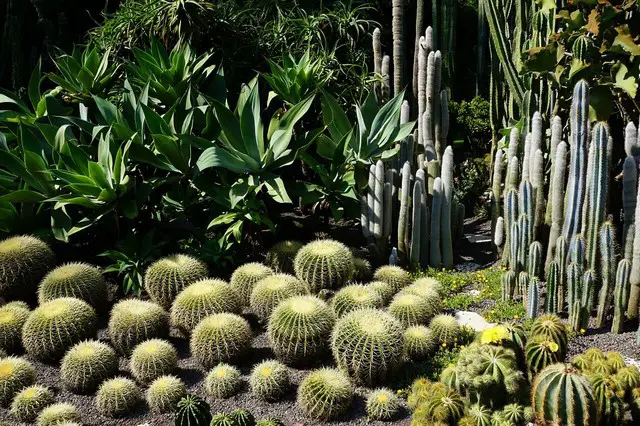
Lava rock, also known as scoria, is a volcanic rock available in red or black varieties. This natural stone looks fantastic as part of a desert landscape.
Lava rocks also make an excellent addition to fire pits. It’s aesthetically pleasing, low-maintenance, and it provides a porous barrier that protects the components of the pit from the flames.
Lava rocks are a lightweight landscaping material that is easy to transport and spread. It makes excellent ground cover because the air pockets pitted into the stone allow nutrients, water, and oxygen to the soil. It also prevents slugs from reaching your plants.
Be Aware
However, lava rock is so light it can easily be blown onto your lawn by slight winds. This can be hazardous to gardening equipment as rogue pieces have been known to damage mower blades.
Pavers
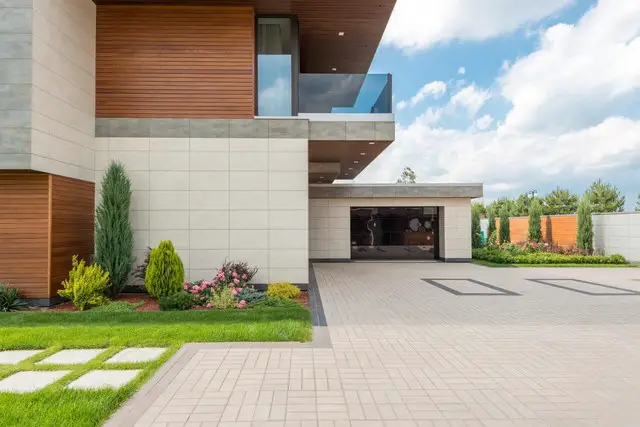
Pavers can be made of brick or concrete, and they come in many textures and colors. Sizes and shapes of this brick stone are customizable, which makes them easy to replace if needed. Outside of landscaping, you will often see pavers being used in creating brick walls.
The diverse range of paving stone options allows you to use them for hundreds of garden projects. This includes driveways, pathways, patios, or decking around a pool or pond.
Since pavers are manufactured, they’re much easier to install compared to the natural equivalent, flagstone. It takes an artistic eye to match up flagstone, but pavers can be made to fit together perfectly.
Stepping Stones
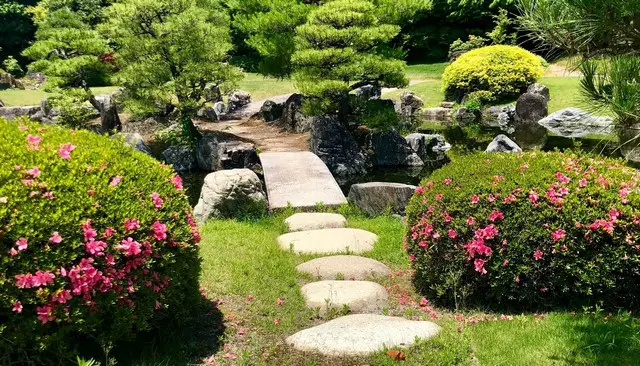
Stepping stones are often used in creating charming walkways across streams and through public garden trails and grass. If you want to add a bit of fun to your yard, stepping stones could be just the thing you need.
Each stepping stone is cut from natural stone, although they can be made from concrete. The size, color, and finish of stepping stones vary depending on the materials used to make them and customization options.
Walkways can be created in a landscape or yard using stepping stones surrounded by other aggregates such as pebbles or gravel. Another option is to pace this landscape rock out at intervals across your grass. However, this can make mowing around them difficult.
Pebbles

Pebbles are smooth rocks that come in a variety of colors and sizes. This natural stone can be used as ground cover, mulch, direct drainage, and in water features. They’re also perfect for creating a clean finish between stepping stones, sandstone or flagstone on a pathway.
Pebbles are an excellent addition to a Zen garden for example. You can also use them to create decorative patterns in garden beds, use them as ground cover and they look great in a rock garden. Some people like to add pebbles to the top of planters to help retain the soil’s moisture.
Mexican Beach Pebbles
This type of natural stone pebble is widely popular among homeowners and garden enthusiasts. Mexican beach pebbles are quite small in nature and have a smooth and elegant look, typically bearing a gray-black color. These beach pebbles are great to use in your garden as well as for edging patios.
Be Aware
If you’re using beach pebbles as a weed suppressor, make sure you spread them thickly or put landscape fabric underneath. If they’re applied thinly, weeds will still grow through.
Boulders

Boulders are the largest landscaping rock you’ll come across. These large landscaping rocks look incredible in a desert landscape with sun-loving shrubs such as cacti and succulents. Boulders will also help to support larger plants such as cacti as it grows.
This type of rock would also sit nicely alongside focal points in your yard and in extensive rock gardens. You can incorporate them into natural ponds, placed with large plants, or surrounding swimming pools.
When installing them in your yard, it’s always best to partially bury boulders; otherwise, they can look out of place.
Artificial Rocks
Artificial rocks can be made from fiberglass, plastic, rubber, or plaster, all lightweight alternatives to the real thing. They’re long-lasting and can be purchased per cubic yard in various shapes, sizes, and colors.
Although artificial rocks are lightweight, they’re usually shaped for wind resistance and can withstand inclement weather conditions. These rocks are hollow and can be placed over unsightly objects on your lawn like irrigation equipment or wellheads, making them great for landscaping.
Some companies will even custom-make rocks, and whatever you can imagine in your landscape design could be made a reality. These could be seating areas, plant pots, animal habitats, wall veneers, ponds; the list is endless.
Faux rock features such as seating or ponds could also be constructed as a single piece, saving time and effort when installing.
If you’re feeling crafty while landscaping, you could even try making your own. Check out this video for a DIY boulder idea.
Final Thoughts
Incorporating the best landscaping rocks into your landscaping projects can bring your garden and outdoor spaces to life. The versatility of landscape rock or stone is incredible. With a proper landscape design, you can create focal points, paths, seating areas, create a rock garden or blend them into your flower bed to create a more natural look.
There are landscape rocks to fit all garden themes, and many provide benefits to your outdoor space.
Resources;

